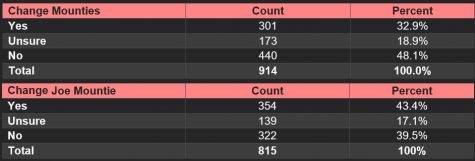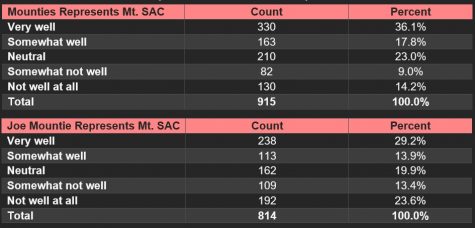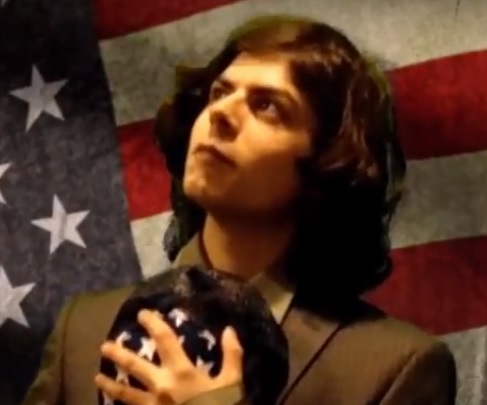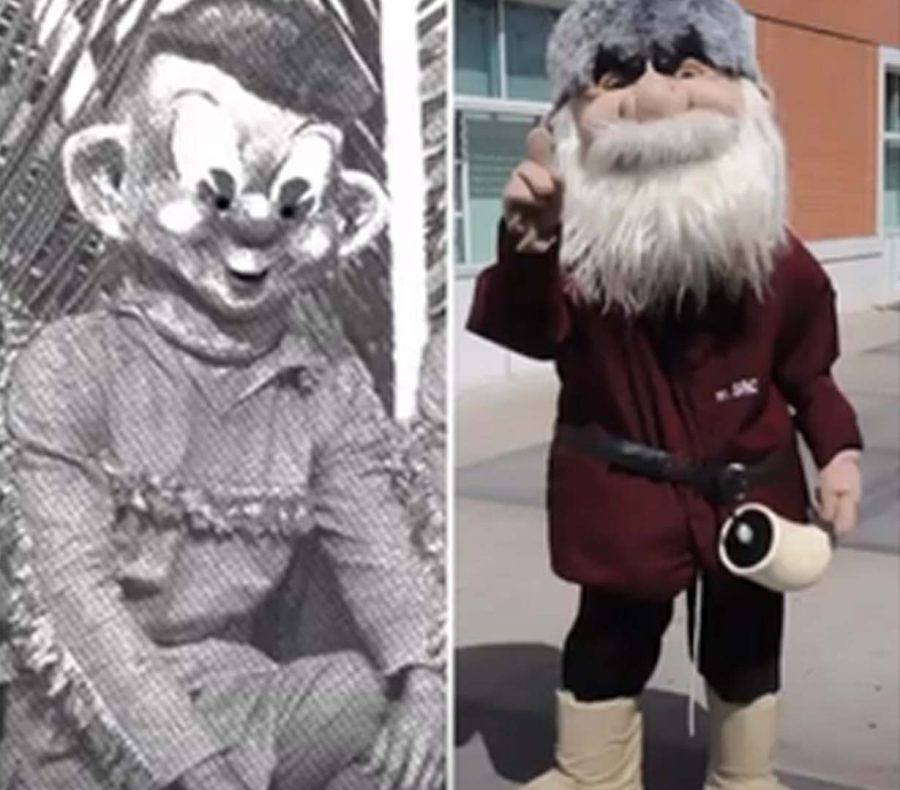Decades Long Discussions Continue On Joe Mountie
The infamous icon and moniker remain contested in further taskforce discussions on Mt. SAC’s branding
After 75 years, the college has a new task force to discuss the appropriateness of the moniker “Mounties” and the mascot of Joe Mountie.
Proposals to change the “Kentucky woodsman wearing a racoon skin cap and toting a musket” are not new. The college held a contest in November of 1988 to redraw the mascot, which resulted in cartoon-styled entries that the athletics department ultimately rejected.
Over 30 years later, the college’s Mascot Task Force is considering how well the moniker and mascot represent the school and the people it serves.
Task force members discussed a 29 page report with survey results on Sept. 24 that outlined how 921 individuals related to Mt. SAC felt about the two parts of the college’s brand. A total of 1,715 community members also put in their two cents on at least one survey question.
The task force’s initial discussions, while not officially making any stances, leaned towards changing the mascot. There was a more mixed reaction towards changing the moniker of “Mountie,” but both leanings were also reflected in the data provided from those related to the college.

As for how well the mascot and moniker represent the college, the responses from the community carried similar themes.

While some pitched that a new image could fundamentally change the way that Mountie is viewed, others argued that the term is rooted with the Canadian mounted police and that would also need to be changed with the mascot.
Despite these initial findings, a total response rate of under 1,000 for a campus that has served over 1.5 million students since 1946 is a concern to some.
For a rough comparison, the number of responses to both surveys is smaller than the size of just one group on campus, faculty, by over 800.
There are 1,759 names listed on the faculty directory, and only 212 of the 921 responses were from faculty. That makes faculty representation in the survey under a fourth of total responses and means the survey only reached 12 percent of faculty members on campus.
A more disproportionate metric can be found in the student responses.
While just under half of the survey’s responses were from students, the survey only reached 1.4 percent of the student population, 30,959 students, that are enrolled this fall.
With that level of disparity, student representative June Shi requested further surveys for data points on how students felt.
“We do not have enough data to help us decide whether to keep the mascot or moniker,” Shi said. “I will suggest we do more research and, in the meantime, we have to increase students’ awareness of [the] moniker and mascot.”
While some agreed the sample size was too small, others felt the results provided showed clear initial indications.
“I guess I would just clarify that I’m not against more research per se, but I’m also happy to go with changing immediately. I mean, I have been from the beginning,” task force member Mary Mcguire added. “I think everybody probably knows that, but I think already that the evidence that we have from this small survey, reinforces that argument on both sides.”
With the task force still fielding more questions and responses, co-chair Uyen Mai offered members more time to think about the college’s branding. Further discussion on the mascot and moniker will continue at the task force’s next meeting on Oct. 15.



